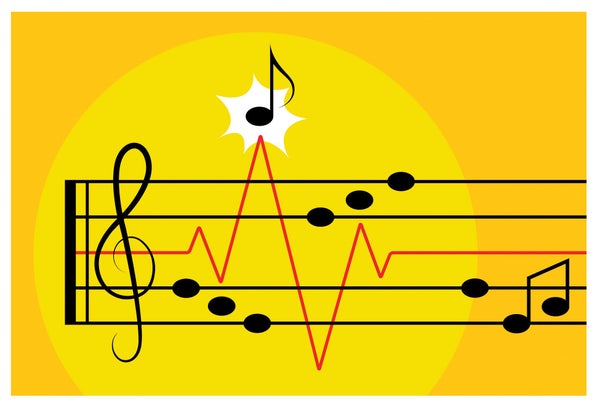Beeping alarms in hospitals are a life-or-death matter—but with so many going off all the time, medical professionals may experience alarm fatigue that impairs care. Researchers now report that changing an alarm's sound to incorporate properties of musical instruments can make it more helpful amid the din.
Auditory alarms can sound up to 300 times a day per patient in U.S. hospitals, but only a small fraction require immediate action. Data from the U.S. Food and Drug Administration suggest that alarm fatigue (including when clinicians turned off or forgot to restart alarms) and other alarm-related issues were linked to 566 deaths over five and a half years.
After a typical day at the hospital, “I'd leave with beeping in my ears,” says Vanderbilt University Medical Center anesthesiologist Joseph Schlesinger. He collaborated with Michael Schutz, a music cognition researcher at McMaster University in Ontario, to analyze how musical sounds could improve hospital alarms.
On supporting science journalism
If you're enjoying this article, consider supporting our award-winning journalism by subscribing. By purchasing a subscription you are helping to ensure the future of impactful stories about the discoveries and ideas shaping our world today.
In 2015 Schutz and Schlesinger began examining musical qualities called timbres that might let softer sounds command attention from busy clinicians. They found that sounds with a “percussive” timbre, many of which contain short bursts of high-frequency energy—such as wineglasses clinking—stand out even at low volume. In contrast, loud, “flat” tones that lack high-frequency components, like a reversing truck's beep, get lost. The researchers have since conducted experiments in which participants evaluate different sounds and melodies for annoyance, detectability and recognizability.
For a recent study detailed in Perioperative Care and Operating Room Management, the researchers played participants the same sequences of notes with varying timbres. They found the sounds that made these sequences least annoying, with no decrease in recall, were percussive and had complex, time-varied harmonic overtones (the many components within a single sound) like a xylophone's ping, rather than a few homogeneous ones like monotonous mechanical beeps.
The researchers are also drawing inspiration from the timbres of other musical instruments: the triangle, for example, famously stands out in a crowd of sounds, possibly because it has overtone sequences that deviate from traditional harmonic series. “We're using music as a cookbook and learning what we can take from it,” Schutz says.
Such findings could lead to alarms that command attention and fit into current regulatory guidelines. Michael Rayo, who studies cognitive systems design at the Ohio State University, says that acoustically complex sounds like those in the study avoid trading detectability for recognition. Experimenting with timbre, he says, “furthers our understanding of aspects that reliably support strong performance.”
Applied psychologist Judy Edworthy, professor emeritus at the University of Plymouth in England, says the finding that musical tones can help improve alarms is important for future patient monitoring and equipment designs. Still, she warns, “any sound can induce alarm fatigue if it is constantly false.”
